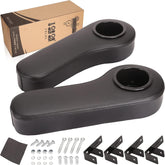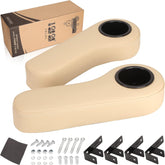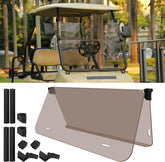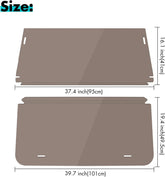Signs of a Bad Golf Cart Drive Belt: How to Identify and Address the Issue
As a golf cart owner, it's crucial to maintain your vehicle's optimum performance to ensure a smooth and enjoyable ride on the course. One critical component that directly affects performance is the golf cart drive belt. By being aware of the signs of a bad golf cart drive belt, you can quickly identify and address any issues that may arise. In this blog post, we will discuss common indicators of a faulty drive belt and provide guidance on how to address the problem effectively.

Slipping or Squealing Sounds
During your golf cart ride, if you notice slipping or squealing noises coming from the engine or drivetrain, it may be an indication of a worn or loose drive belt. Pay close attention to these sounds, particularly during acceleration or uphill climbs. These noises serve as a clear sign that the drive belt needs inspection and potential replacement.
Reduced Power or Speed
A worn-out or damaged drive belt can result in a loss of power or reduced speed in your golf cart. If you experience a decrease in performance or your cart struggles to reach its usual top speed, it could be an indication of a faulty drive belt. Ignoring this issue may impact your overall golfing experience.
Burning Smell
If you detect a distinct burnt or rubbery smell emanating from your golf cart's engine compartment, it is cause for concern. This smell typically indicates that the drive belt is slipping or rubbing against other components, resulting in excessive friction. If you encounter this odor, it is crucial to have your drive belt inspected and replaced promptly to prevent further damage.
Visible Damage
Regularly inspecting your golf cart drive belt is essential to catch any signs of wear, cracks, fraying, or glazing. If you notice any visible issues on the belt, it is a clear indication that the drive belt needs replacement. Visual inspection should be part of your routine maintenance to ensure the longevity and performance of your golf cart.
Belt Tension
Assessing the tension of your golf cart drive belt is another crucial step in determining its condition. Press down on the belt with your finger; it should have some tension and resistance. If the drive belt feels loose or slack, it may need adjustment or replacement. Proper tension is vital for the drive belt to function optimally and prevent slippage.
What to Do If You Suspect a Bad Golf Cart Drive Belt
If you experience any of the mentioned symptoms or suspect that your golf cart drive belt is faulty, follow these steps:
-
Consult the Manufacturer's Guidelines:
Refer to the manufacturer's guidelines or user manual for specific information on drive belt maintenance and replacement intervals for your golf cart model. Adhering to these guidelines will ensure you stay within the recommended maintenance schedule. -
Have the Drive Belt Inspected:
If you are uncertain about the condition of your golf cart drive belt or lack the necessary expertise, it is advisable to have it inspected by a qualified technician. They will assess the drive belt's condition and provide guidance on whether it requires adjustment or replacement. -
Replace the Drive Belt if Necessary:
If the inspection reveals that your golf cart drive belt is indeed faulty, it is crucial to have it replaced promptly. Consult with the technician or follow the manufacturer's guidelines to ensure you select the correct replacement drive belt for your golf cart model.
Conclusion
The golf cart drive belt is a vital component that directly affects your vehicle's performance. By being aware of the signs of a bad drive belt and taking prompt action, you can prevent potential breakdowns and ensure a smooth ride on the golf course. Regular maintenance, visual inspections, and adherence to manufacturer guidelines are crucial for keeping your golf cart in optimal condition. By staying proactive and addressing any drive belt issues promptly, you can enjoy a seamless and enjoyable golfing experience.











Leave a comment
Please note, comments need to be approved before they are published.